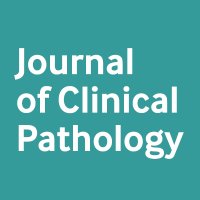
Vikram Deshpande
@vik_deshpandemd
Professor of Pathology, Harvard Medical School, GI Pathologist @BIDMCpath. Head GI & BST Path. Editor-in-Chief Journal of Clinical Pathology @JClinPath_BMJ
ID: 425377176
https://cmecatalog.hms.harvard.edu/frontiers-gastrointestinal-hepatobiliary-pathology 30-11-2011 22:50:55
4,4K Tweet
14,14K Followers
763 Following












